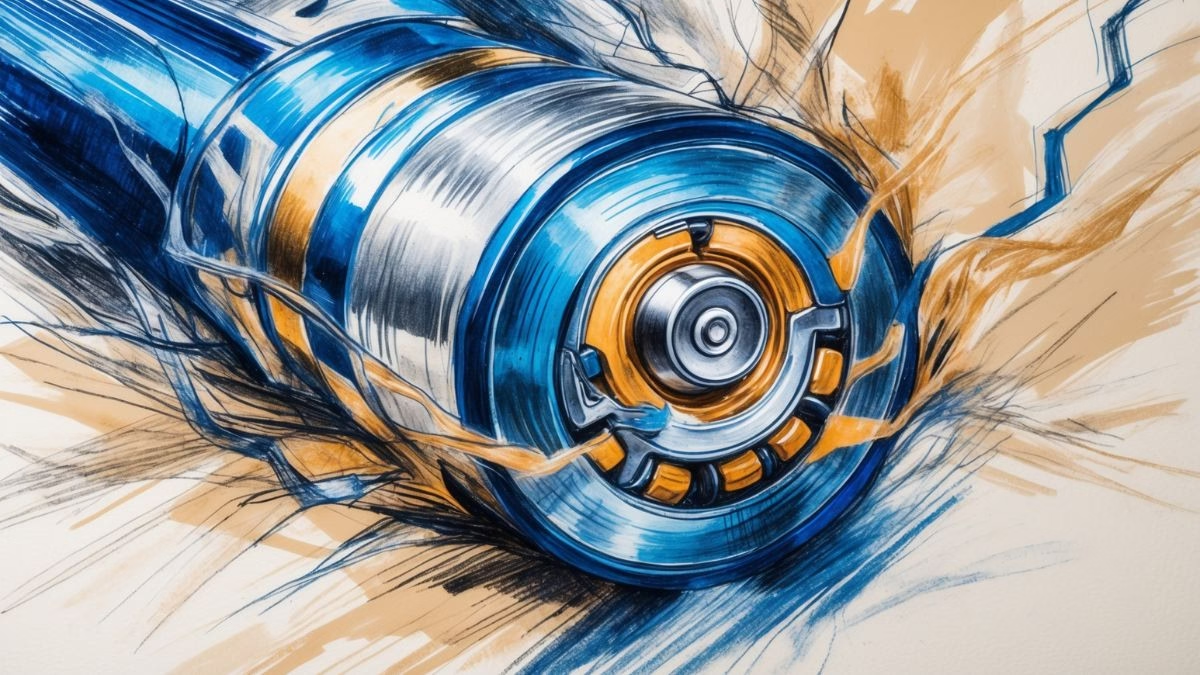Introduction
Think about your day so far. You probably woke up to an alarm on your phone, maybe used a TV remote, or drove a car. From our laptops to our watches, our lives are powered by a silent, incredible invention: the battery. They seem like magic boxes of energy, but what’s really going on inside that little cylinder or flat pack?
The science behind how a battery works is a fascinating story of chemistry and electricity, a tiny, controlled explosion happening on a molecular level. This quiz is your chance to peek inside that magic box. It’s not a test, but a fun journey to demystify the technology you use every single day. By exploring these questions, you will:
Understand the basic parts that make up every battery.
Discover the secret “dance” of electrons and ions that creates power.
Learn the difference between a regular and a rechargeable battery.
Gain a new appreciation for the clever science in your pocket.
So, are you ready to unlock the secrets of stored energy? Let’s get started!
Quiz Content Audio
Learning Quiz
This is a learning quiz from English Plus Podcast, in which, you will be able to learn from your mistakes as much as you will learn from the answers you get right because we have added feedback for every single option in the quiz, and to help you choose the right answer if you’re not sure, there are also hints for every single option for every question. So, there’s learning all around this quiz, you can hardly call it quiz anymore! It’s a learning quiz from English Plus Podcast.
The Elegant Dance Inside Your Batteries
Hello and welcome! Let’s talk about something we all use every day but rarely think about: the battery. It’s in your phone, your remote control, maybe even your car. It’s a little box of power that lets us take our world with us. But have you ever wondered how it works? It’s not magic, it’s chemistry—an elegant, controlled dance happening on a molecular level.
To understand it, let’s build a battery from scratch in our minds. The simplest battery needs just three things. You need two different metals and a special liquid. You might have even done this experiment in school by sticking a copper coin and a galvanized (zinc-coated) nail into a lemon. The two different metals act as our terminals, and the acidic lemon juice acts as our special liquid.
This simple setup reveals the three essential parts of every battery. We have a negative terminal, called the anode. This is the part that wants to give away its electrons. In our lemon battery, that’s the zinc nail. Then we have a positive terminal, called the cathode. This part wants to accept those electrons. That’s our copper coin. And finally, we have the special liquid, called the electrolyte. In this case, it’s the lemon juice.
So, how does this create power? The secret lies in creating two separate paths, like two rivers flowing from the same source. The anode material, the zinc, starts to dissolve in the acidic electrolyte. When it does this, it breaks apart into two things: tiny, negatively charged electrons, and larger, positively charged zinc ions.
Now, here’s the clever part. The battery is designed so that these two things have to take different paths. The electrons, the source of our electricity, are blocked by the electrolyte. They can’t swim through the lemon juice. The only way for them to get to the copper cathode, which is attracting them, is to travel outside the lemon, through a wire. And if we place a small LED light in the middle of that wire, the flow of electrons passing through it will make it light up! That’s the external circuit. We are tapping into that river of electrons and using it to do work.
But what about the positive zinc ions left behind at the anode? They complete the second river. They travel through the electrolyte to the cathode side. This flow of ions keeps the electrical charge inside the battery balanced. If this internal river of ions didn’t flow, the whole process would stop instantly. So, you have a flow of electrons outside through your device, and a flow of ions inside through the electrolyte. This beautiful, two-part dance is what creates a steady electrical current. To make sure the anode and cathode don’t touch and cause a dangerous short circuit, a thin, porous wall called a separator is placed between them, allowing ions to pass but blocking the electrodes themselves.
The “push” that drives the electrons through the wire is called voltage. It’s determined by how different the two metals are in their desire to give up and accept electrons. The more they “want” to react, the higher the voltage, or electrical pressure.
So, what makes a battery rechargeable? Think of the chemical reaction as a ball rolling down a hill. In a normal, non-rechargeable alkaline battery, when the ball reaches the bottom, it’s done. The chemicals have reacted and formed new, stable substances that can’t easily be turned back. But in a rechargeable lithium-ion battery, the reaction is like a ball on a specially designed ramp. When you plug in your phone, the charger acts like a ski lift, pushing the ball (the electrons and lithium ions) back up the hill to their starting positions. It reverses the chemical reaction, getting it ready to go again.
But why does your phone battery eventually die? Because that ski lift isn’t perfect. Every time you charge and discharge, a few of the lithium ions get stuck, or the ramp gets a little bit damaged. The materials inside slowly degrade. After hundreds of cycles, so many ions are trapped and so much material is degraded that the battery just can’t hold a full charge anymore.
From the ancient “Baghdad Battery” mystery to Alessandro Volta’s first true battery—the “Voltaic Pile”—which he built by stacking discs of metal, humanity has been fascinated with capturing chemical energy. Today, that fascination has given us the lightweight, high-capacity lithium-ion batteries that power our portable world.
So, the next time you pick up your phone, take a moment to appreciate the elegant chemical dance happening inside. It’s a perfectly controlled reaction, turning stored chemical potential into the electrical energy that connects you to the world. It’s not magic, it’s just amazing science.










0 Comments